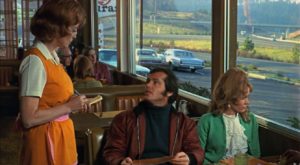 5 Easy SEO Best Practices Everybody Should Be Doing
5 Easy SEO Best Practices Everybody Should Be Doing
Five Easy Pieces to SEO- may sound like an odd title, but if you have ever seen the movie, you will understand. In short, it’s about a character who denies–wait. I’m not going to ruin it for you. You can read an interesting synopsis here: Five Easy Pieces Symbolism. What I will do, is tell you what made me think of a movie title from 1970 for this blog post. In the article mentioned above, author described the main character as a depiction of genius/madness. Which, sometimes SEO feels like to me. Sometimes, it’s SO obvious, and other times, it is SO obscure. So, let’s start with the obvious. And by “obvious” I mean, let’s start with the low hanging fruit of the things everybody can do to make their site more attractive to the search engines. (And by “search engines”, I mean Google.)
Internet Traffic: We all want it. Fortunately, there are some very quick and easy things you can to to help your site rank better with the search engines. If you start early in your website development with a “SEO best practices” method, you will be glad you did, because you will know what worked and what didn’t. If you didn’t start out with a best practice method for your SEO, it’s not too late! Just start where you are at.
Here are 5 quick and easy things you can and should do on every single page of your website:
-
Titles:
Make sure every page on your website has a unique DESCRIPTIVE title. It is surprising how many websites use the same title for every page. Some experts say there is an absolute rule about keyword placement; I don’t happen to agree. It just needs to be somewhere in the title. Because I like to do things the same way, I like to have my key phrase first in the title, followed by either a “|” or a “-“, then my business name. Next, another “|” or “-“, followed by the geographic area I am targeting. For example on my main page, my title would look something like this: Optimized Web Design | Clear Traffic | San Francisco, Bay Area. Easy. Lather, rinse, repeat, on every page. Next:
-
Meta Description:
This is the little snippet of description right under your title listed in the search engine results. This one or two lines of text is SO IMPORTANT! Your meta description may be the only chance you get to inspire a potential client to click your link. Don’t waste it: make it count. Twitter allows you 140 characters, your meta description tag allows you 160. Think of it as a Tweet- short, sweet, and compelling.
-
Alt Text:
Alt text or alternative text is used to describe the pictures on your site. For the visually impaired, it’s a way for them to “see” the images you use on your site. It’s also used by the search engines to determine the topic of the surrounding text. This is an important piece of information, so be very descriptive when using this “tag. Good use of this tag improves user experience of your site, and helps you with search engine rankings. A win-win.
-
Headings:
Most of us can remember that loooong English reading assignment that went on and on. No fun! Don’t do that to your readers. Make it short and sweet. Tell them what you are going to tell them in a heading tag, and then tell them what you want to tell them in a clear, concise way. Again, the heading tags tell the search engines (and your readers) what the page is about.
-
Link Text:
The days of “click here” are over. Most people are web-savvy enough to know that text of a different color is clickable, so be sure to include your keyphrase in every text link. Make it natural and normal, when you add a link to your “learn more” page, landing page, or “contact us for more information” page. Just remember, “click here” adds no seo value to your page, so make that link work for you!
Madness? Genius? SEO is actually both. It’s a process, but worth the time and effort involved.

